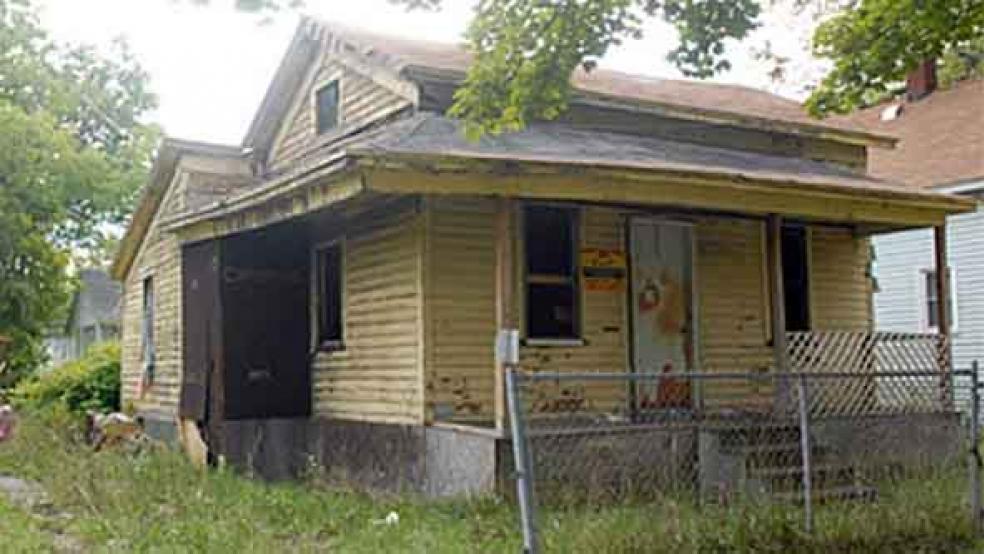Today’s dilemma: a sandwich or a house?
They both cost about $7, so it’s a tough call. Yes, a house. For $7. As the country continues to dig itself out of the wreckage of the housing crisis, you’d be surprised at what you can find trolling through the sludge of distressed real estate listings on the Internet. Some 3.4 million homes have been lost to foreclosure since the recession began, and banks are hoping to unload their backlog of neglected homes onto buyers. Sure, the $7 house is boarded up and abandoned, but for the same price as a tube of toothpaste, what do you expect? If $7 still seems too pricey, there’s an apartment in Indianapolis with a starting bid of $1. Or for real moneybags, how about a 3-bedroom in Detroit for $100? What’s stopping anyone from jumping into the housing market these days at the click of a mouse?
Well, for one, repair costs. Unless you hire an inspector to visit the house, there’s no way to know how much repairs will set you back. Many of the properties are well beyond fixing and you’re essentially just buying the lot. Then there are possible back taxes, which can run into the thousands. If the property is condemned — meaning it’s slated for demolition by the city — as the new owner, you might have to pay to knock it down, or go through expensive legal proceedings to save the structure. In 2009, one impulsive buyer in Long Beach, Calif., won a place in Cleveland for $4,000 on eBay, but by the time he actually got to see his new home, scavengers had torn the copper piping from the walls, ripped out the sinks and stolen the boiler from the basement. The city had condemned the house, and it would cost him some $8,000 to demolish it. He told a reporter from The New York Times that he didn’t want to walk away, but he didn’t have the money to fix it. Yet if an owner leaves a property abandoned, they’d still be responsible for taxes, and in some cities, fees for the city to maintain the yard and fire department services.
“Houses at giveaway prices typically have been trashed,” says Walter Molony at the National Association of Realtors. “This means a high likelihood that the copper has been stripped by vandals for cash, smashing the walls to remove pipe and wiring, so renovation costs would be extraordinary. In many oversupplied markets, the cost of construction is higher than a sales price or appraised value, so already the math is working against you.” He also points out that if there are other abandoned properties in the neighborhood, it’s difficult to find renters.
But there are happy endings. One couple bought adjacent houses in Detroit for $1,900 and $500 respectively, selling the second one to a pair of local artists for a $50 profit. They planted a garden and remodeled their new home with solar heating and electricity, which increased its value. When they heard of other dirt cheap properties in the neighborhood, they told their friends. Suddenly, a community was born — one that might attract families over squatters.


